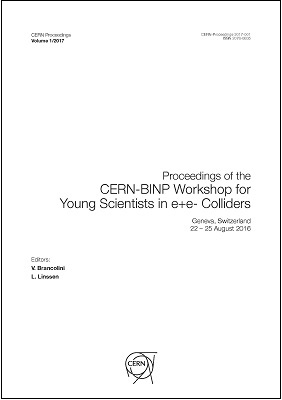High Field Studies for CLIC Accelerating Structures Development
DOI:
https://doi.org/10.23727/CERN-Proceedings-2017-001.127Keywords:
CLIC, vacuum breakdown, d.c. pulsed system, breakdown rate.Abstract
Compact Linear Collider RF structures need to be able to achieve the very high average accelerating gradient of 100 MV/m. One of the main challenges in reaching such high accelerating gradients is to avoid vacuum electrical breakdown within CLIC accelerating structures. Accelerating structure tests are carried out in the klystron-based test stands known as the XBoxes. In order to investigate vacuum breakdown phenomena and its statistical characteristics in a simpler system and get results in a faster way, pulsed dc systems have been developed at CERN. To acquire sufficient breakdown data in a reasonable period of time, high repetition rate pulse generators are used in the systems for breakdown studies, so-called pulsed dc system. This paper describes the pulsed dc systems and the two high repetition rate circuits, which produce high-voltage pulses for it, available at CERN.Downloads
Published
2017-06-29
Issue
Section
Submission to the proceedings of CERN-BINP Workshop for young scientists in e+e- colliders
License
Authors who publish with this journal agree to the following terms:- Authors retain copyright and grant the journal right of first publication with the work simultaneously licensed under a Creative Commons Attribution License CC-BY-4.0 (link to external page) that allows others to share the work with an acknowledgement of the work's authorship and initial publication in this journal.
- Authors are able to enter into separate, additional contractual arrangements for the non-exclusive distribution of the journal's published version of the work (e.g., post it to an institutional repository or publish it in a book), with an acknowledgement of its initial publication in this journal.
- Authors are permitted and encouraged to post their work online (e.g., in institutional repositories or on their website) prior to and during the submission process, as it can lead to productive exchanges, as well as earlier and greater citation of published work (See The Effect of Open Access).

